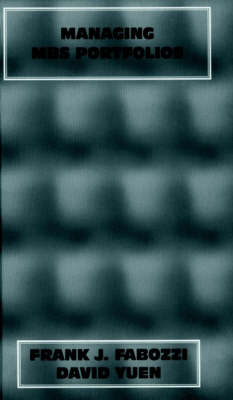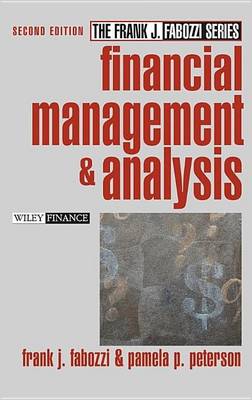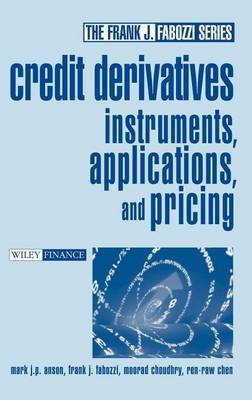Frank J. Fabozzi
17 primary works • 22 total works
Book 15
Credit Union Investment Management
by Frank J. Fabozzi and Mark B. Wickard
Book 34
Book 37
Book 56
Credit Derivatives
by Mark J. P. Anson, Frank J. Fabozzi, and Moorad Choudhry
Book 57
Book 58
Book 60
Book 73
Book 104
Measuring and Controlling Interest Rate and Credit Risk
by Frank J. Fabozzi, Steven V. Mann, and Moorad Choudhry
Measuring and Controlling Interest Rate and Credit Risk is a systematic evaluation of how to measure and control the interest rate risk and credit risk of a bond portfolio or trading position, defining key points in the process of risk management as related to financial situations. The authors construct a verbal flow chart, defining and illustrating interest rate risk and credit risk in regards to valuation, probability distributions, forecasting yield volatility, correlation and regression analyses. Hedging instruments discussed include futures contracts, interest rate swaps, exchange traded options, OTC options, and credit derivatives. The text includes calculated examples and readers will learn how to measure and control the interest rate risk and credit risk of a bond portfolio or trading position. They will discover value at risk approaches, valuation, probability distributions, yield volatility, futures, interest rate swaps, exchange traded funds; and find in-depth, up-to-date information on measuring interest rate with derivatives, quantifying the results of positions, and hedging.
Frank J. Fabozzi (New Hope, PA) is a financial consultant, the Editor of the Journal of Portfolio Management, and an Adjunct Professor of Finance at Yale University?s School of Management.
Steven V. Mann (Columbia, SC) is Professor of Finance at the Moore School of Business, University of South Carolina. Moorad Choudhry (Surrey, UK) is a Vice President with JPMorgan Chase structured finance services in London.
Moorad Choudhry (Surrey, England) is a senior Fellow at the Centre for Mathematical Trading and Finance, CASS Business School, London, and is Editor of the Journal of Bond Trading and Management. He has authored a number of books on fixed income analysis and the capital markets. Moorad began his City career with ABN Amro Hoare Govett Sterling Bonds Limited, where he worked as a gilt-edged market maker, and Hambros Bank Limited where he was a sterling proprietary trader. He is currently a vice-president in Structured Finance Services with JPMorgan Chase Bank in London.
Book 132
Financial Management and Analysis
by John C. Peterson, Frank J Fabozzi, Cfa, and Pamela P. Peterson
Book 133
Credit Derivatives
by Mark J Anson, Frank J Fabozzi, Cfa, Mr Moorad Choudhry, Ren-Raw Chen, and Phd Cfa Anson Mark J P
Credit derivatives has become one of the fastest-growing areas of interest in global derivatives and risk management. Credit Derivatives takes the reader through an in-depth explanation of an investment tool that has been increasingly used to manage credit risk in banking and capital markets. Anson discusses everything from the basics of why credit risk is important to accounting and tax implications of credit derivatives. Key topics covered in this essential guidebook include: credit swaps; credit forwards; credit linked notes; and credit derivative pricing models. Anson also discusses the implications of credit risk management as well as credit derivative regulation. Using charts, examples, basic investment theory, and elementary mathematics, Credit Derivatives illustrates the real-world practice and applications of credit derivatives products.
Mark J. P. Anson (Sacramento, CA) is the Chief Investment Officer at Calpers.
Frank J. Fabozzi (New Hope, PA) is a Fellow of the International Center for Finance at Yale University.
Moorad Choudhry (Surrey, UK) is a Vice President in Structured Finance Services with JP Morgan Chase Bank in London.
Ren-Raw Chen is an Assistant and Associate Professor at the Rutgers University Faculty of Management.
Book 151
Structured Products and Related Credit Derivatives
by Frank J. Fabozzi, Glenn M. Schultz, and Brian P Lancaster
Book 159
Subprime Mortgage Credit Derivatives
by Laurie S. Goodman, Thomas A Zimmerman, Douglas J. Lucas, Frank J. Fabozzi, and Shumin Li
The recent growth in subprime lending, along with a number of other industry factors, has made the demand for timely knowledge and solutions greater than ever before, and this guide contains the information financial professionals need to succeed in this challenging field.
Book 164
Book 177
Book 189
Leveraged Finance
by Stephen J Antczak, Douglas J. Lucas, and Frank J. Fabozzi
Book 200
Mortgage-Backed Securities
by Frank J. Fabozzi, Anand K Bhattacharya, and William S Berliner
Developments in Collateralized Debt Obligations
by Douglas J. Lucas, Laurie S. Goodman, Frank J Fabozzi, Cfa, Rebecca Manning, Matthew Pritchard, and Linda Lowell
Robust Portfolio Optimization and Management
by Frank J. Fabozzi, Sergio M Focardi, Petter N Kolm, and Dessislava Pachamanova
I highly recommend this book to finance professionals and students alike." --John M. Mulvey, Professor of Operations Research and Financial Engineering, Princeton University






